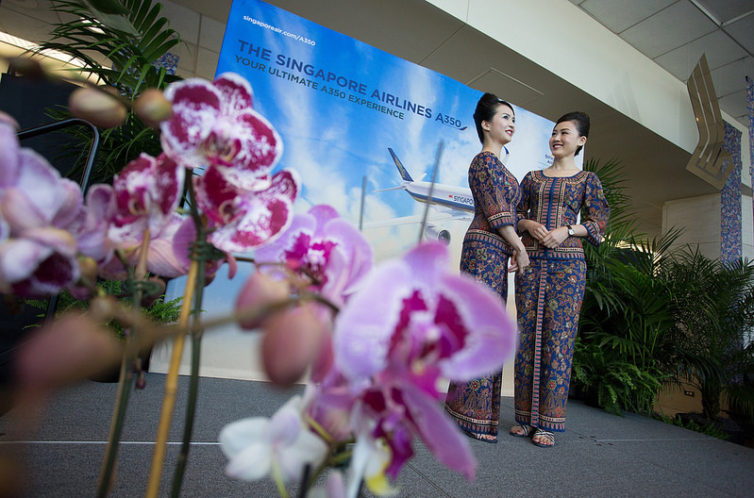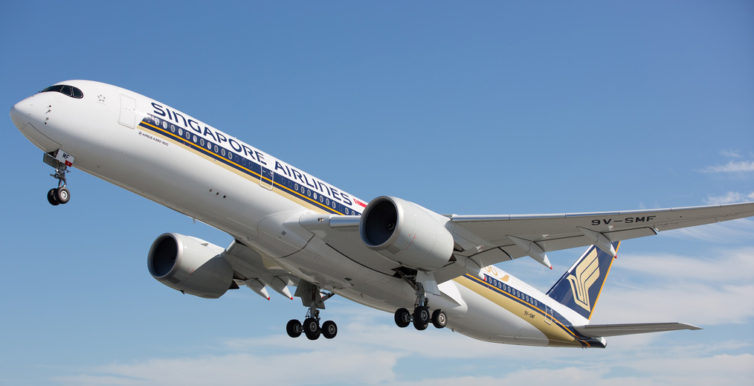Singapore Airlines’ ultra-long-haul route from Newark to Singapore — discontinued a few years ago — was truly a legendary flight. On the wings of an Airbus A340-500, it clocked in just shy of 19 hours westbound, making it the longest regularly scheduled flight in the world. But when fuel prices rose, Singapore Airlines was forced to get rid of the inefficient A340-500s, and the ultra-long routes with them.
Then came a new generation of aircraft that offered enough fuel efficiency to make lengthy routes more profitable. Singapore Airlines’ Star Alliance partner United got the jump on launching a direct flight between the U.S. and Singapore, flying a Boeing 787-9 from San Francisco. Singapore Airlines (SQ) struck back with an Airbus A350-900 on the same route a few months later, but it wasn’t done there. SQ has its sights set on the return of the ultra-long-haul direct flights to Newark and Los Angeles. And very soon, it will have just the plane to do it: the Airbus A350-900ULR (for “ultra long range”).
Read on for more on what this very special aircraft means for Singapore Airlines, and what it could mean for you.
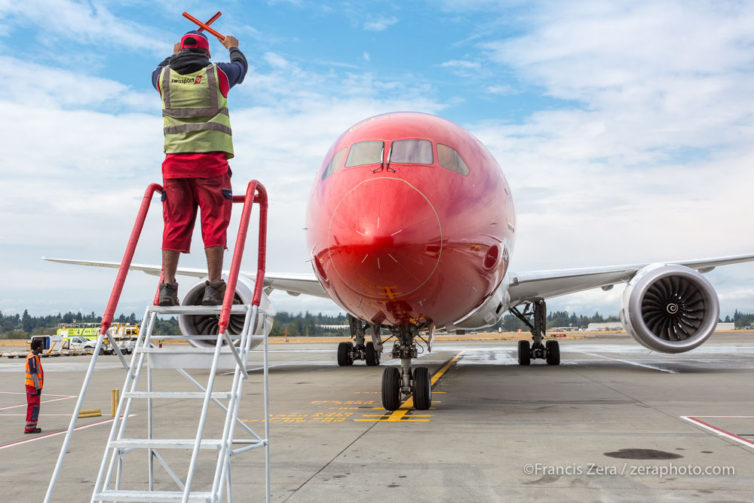
Norwegian’s inaugural flight to Seattle from London Gatwick, a Boeing 789, rolls up to the parking stand
It was a homecoming of sorts (at least for the Everett, Wash.-built 787-9) as Norwegian kicked off new 4x-weekly service from Gatwick to Seattle on Sunday, Sept. 17.
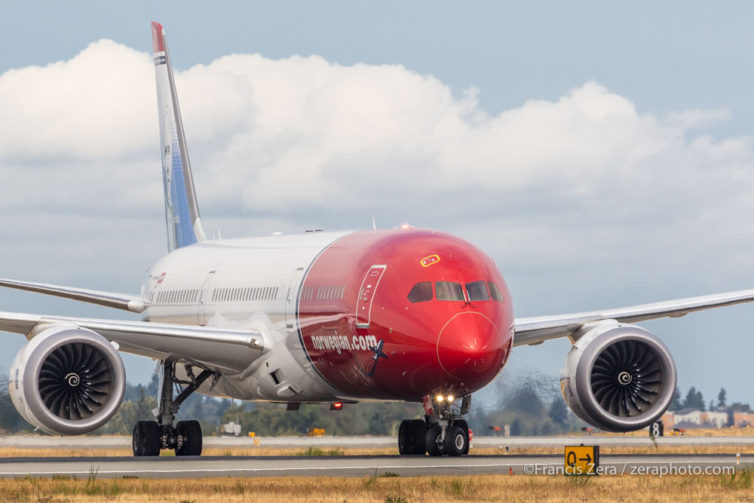
Norwegian flight DY 7131 taxiing after landing at Seattle-Tacoma International Airport. Gotta love those red-headed jetliners.
It was a lovely Seattle morning. The rain that had been forecast was late in arriving, and the plane landed early; everything came together nicely.

The “Shining Star” livery is currently flying to Chicago (on certain days of the week) – Photo: Manu Venkat | AirlineReporter
At first glance, Taiwan-based EVA Air and Sanrio’s Hello Kitty are an unconventional pairing. The former is an airline with a reputation for refined and efficient service, while the latter is a lighthearted cartoon character.
But having recently flown one of EVA’s special Hello Kitty long-haul flights, we can confirm that the combo makes for a really fun inflight experience. In our first installment we wrote about the lounge experience in Paris, the Royal Laurel cabin, and the first meal service. And now we’re back with the rest!

Read on as we discuss the sleep experience in EVA’s Royal Laurel business class, discover some unique Hello Kitty amenities, enjoy a Chinese-style breakfast, and more from the second half of our flight. Plus, we’ll fill you in on how you can get yourself on a Hello Kitty flight on EVA Air.
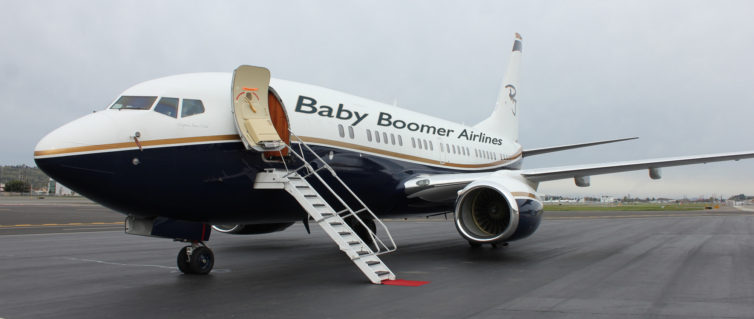
Yup… this IS your grandpa’s airline – Photo: David Parker Brown | AirlineReporter
From time-to-time, my mom will forward me airline stories; it is kind of nice. Recently, she pointed out a new airline named Joon, which is being marketed to millennials. See, she likes to poke fun since I am right on the cusp of being a millennial. Some say that being born in 1980 makes you one, while others debate the exact year. I say that I am NOT a millennial and get insulted being called one. I am a unique indivdual and cannot be easily placed into just one convenient definition. Wait. Damn it.
Quickly reading over Joon’s press release, it seemed to use lots of fancy words, but didn’t provide much actual substance or new ideas. It did, however, make me roll my eyes… hard. Just a taste of the press release:
“Joon is aimed at a young working clientele, the millennials (18 to 35-year-olds), whose lifestyles revolve around digital technology. This new brand has been entirely designed to meet their requirements and aspirations, with an authentic and connected offering that stands out in the world of air transport.”
“Joon will not be a low-cost airline as it will offer original products and services that reflect those of Air France. Joon is a lifestyle brand and a state of mind. Short, punchy and international, the name Joon is designed to address a worldwide audience.”
My head hurts. And that livery. And it is not even a low-cost airline. I just need to breathe… I don’t want to get carried away here complaining about this concept — not what this story is for. (Read a bit more about Joon, on Ben Schlappig’s OneMileataTime).
Anyhow, my mom and I got to thinking. If we are seeing more airlines marketed towards the younger folks, why doesn’t an airline market to her generation: the Baby Boomers? The conversation got fun and I think we came up with some pretty good ideas on what some Baby Boomers might want from an airline. I decided (with her permission) to share. Here is our airline…
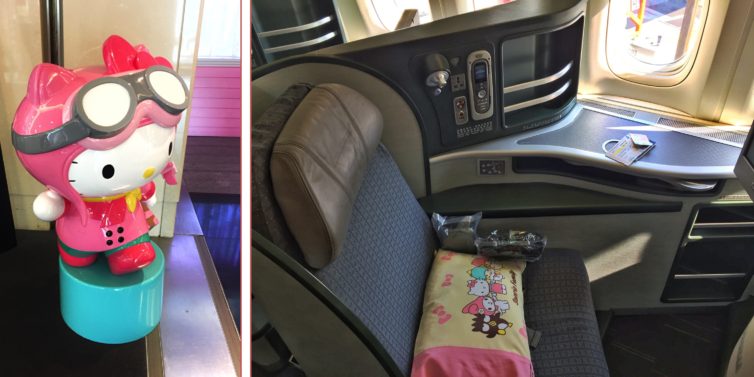
Is air travel not whimsical enough for you? Does the inflight experience on most airlines not appeal enough to your inner preteen self? Well, we have good news for you! Taiwan-based EVA Air has what you need: a truly one-of-a-kind Hello Kitty themed service on select routes that will make any other flight seem boring by comparison.
Hello Kitty aside, I’ve wanted to travel EVA Air for a long time. Its Royal Laurel premium cabin is a favorite among the AvGeek elite for its excellent seat and service. Plus, EVA Air is part of the pantheon of elite Skytrax Five-Star airlines. So I included an EVA flight from Paris to Taipei in a recent Star Alliance multi-airline itinerary.
I wasn’t initially aware that my flight was a Hello Kitty service, but when I found out, I was thrilled! Not because I’m much of a Hello Kitty fan (though would I admit it if I was?). More because these Hello Kitty flights are an iconic AvGeek experience and a rare find.
Read on for photos and tales from my trip with Hello Kitty … *ahem* I mean Captain Hello Kitty.

The Hello Kitty Shining Star Jet, which is currently flying from ORD-TPE as BR55!
